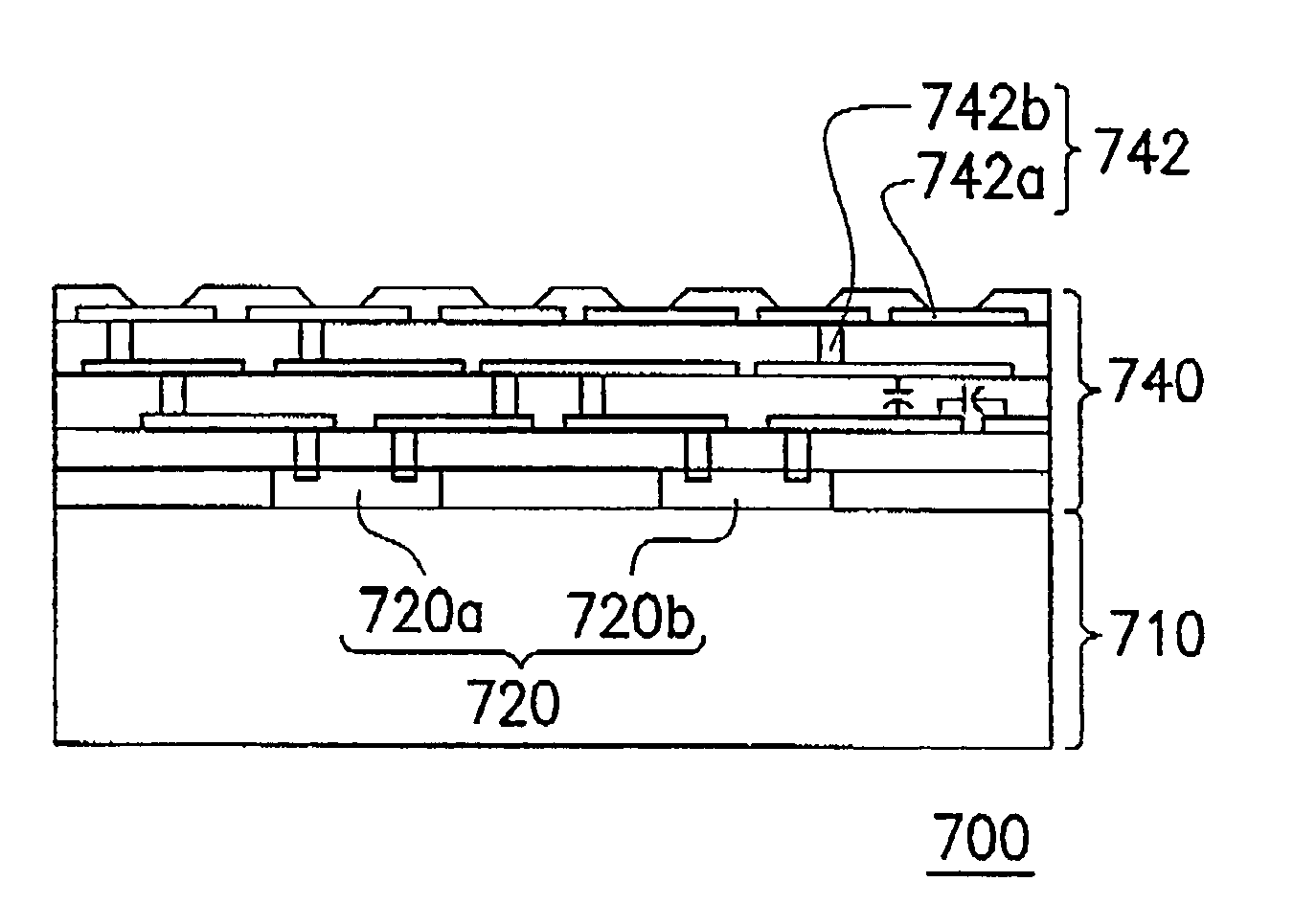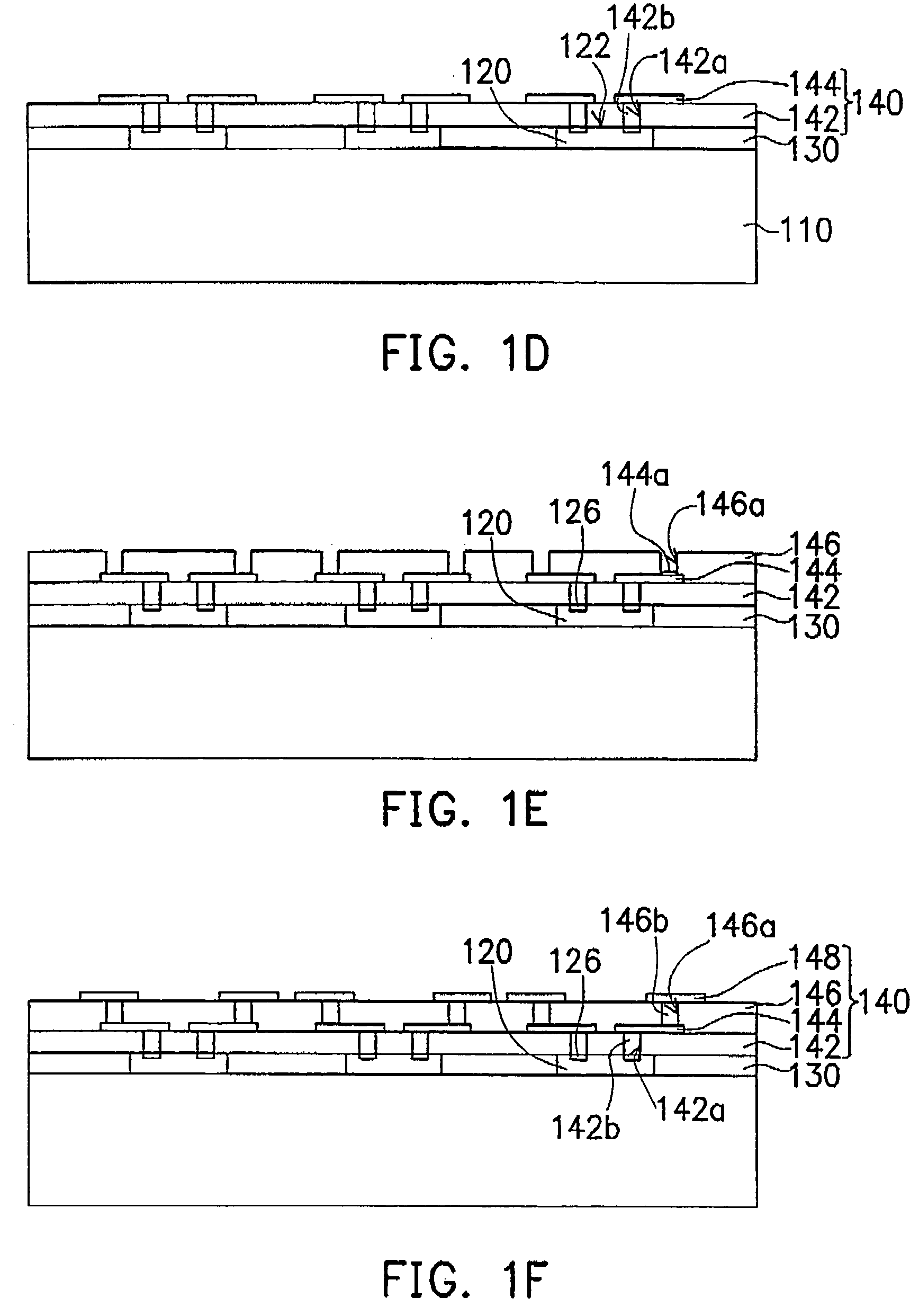Electronic component with die and passive device
a passive device and electronic component technology, applied in the direction of semiconductor devices, semiconductor/solid-state device details, electrical devices, etc., can solve the problems of increasing reducing the distance of the signal transmission path, and increasing the delay and attenuation of the signal
- Summary
- Abstract
- Description
- Claims
- Application Information
AI Technical Summary
Benefits of technology
Problems solved by technology
Method used
Image
Examples
first embodiment
[0043]According to the above, the present invention is a chip package structure with an organic substrate and a plurality of dies on the organic substrate. The external circuitry of the thin-film circuit layer allows the metal pads of the die to fan out. By forming bonding pads corresponding to the metal pads of the dies such as solders balls, bumps, or pins as the signal input terminals, the distance of the signal path is effectively decreased. As a result, signal delay and attenuation are reduced to increase performance of the die.
[0044]The present invention uses existing technology on and equipment for fabricating PCB for the fabrication of the organic substrate by heat pressing a plurality of insulating core boards. Alternatively, the organic substrate can also be fabricated in large volume by injection molding. As a result of the low fabrication and material cost of the organic substrate, the cost of chip packaging is also lowered.
[0045]The second embodiment of the present inve...
second embodiment
[0049]the present invention is an organic substrate with a plurality of inwardly protruded areas for inlaying dies by adhering the backside of the dies to the bottom of the inwardly protruded areas and exposing the active surface of the dies. A thin-film circuit layer is formed on top of the dies and the organic substrate to fan out the metal pads of the dies by using the external circuitry of the thin-film circuit layer. Due to the inlay of the dies in the organic substrate, thinning of the thickness of the chip package structure is effectively achieved and the surface of the organic substrate provides enough planarity and support for the formation of the thin-film circuit layer.
[0050]The third embodiment of the present invention differs from the second embodiment of the present invention by using an integrated organic substrate with at least one organic layer and one heat conducting layer. FIG. 3A to 3C are schematic diagrams of the sectional view of the third embodiment illustrat...
third embodiment
[0054]the present invention is an integrated organic substrate with an organic layer with a plurality of openings and a heat conducting layer. The openings in the organic layer will form the inwardly protruded areas in the integrated organic substrate. The backside of the die adheres to the bottom of the inwardly protruded areas so the dies are inlayed in the inwardly protruded areas and exposing the active surface of the dies. This integrated organic substrate can efficiently dissipate heat from the dies to the outside because the bottom of the inwardly protruded area is the surface of the heat conducting material. The surface of the organic substrate provides enough planarity and support for the formation of the thin-film circuit layer.
[0055]The fourth embodiment of the present invention is slightly different from the first three embodiments. FIG. 4A to 4E are schematic diagrams of the sectional view of the fourth embodiment illustrating the fabrication of the structure.
[0056]Plea...
PUM
| Property | Measurement | Unit |
|---|---|---|
| thickness | aaaaa | aaaaa |
| thickness | aaaaa | aaaaa |
| thickness | aaaaa | aaaaa |
Abstract
Description
Claims
Application Information
 Login to View More
Login to View More - R&D
- Intellectual Property
- Life Sciences
- Materials
- Tech Scout
- Unparalleled Data Quality
- Higher Quality Content
- 60% Fewer Hallucinations
Browse by: Latest US Patents, China's latest patents, Technical Efficacy Thesaurus, Application Domain, Technology Topic, Popular Technical Reports.
© 2025 PatSnap. All rights reserved.Legal|Privacy policy|Modern Slavery Act Transparency Statement|Sitemap|About US| Contact US: help@patsnap.com



